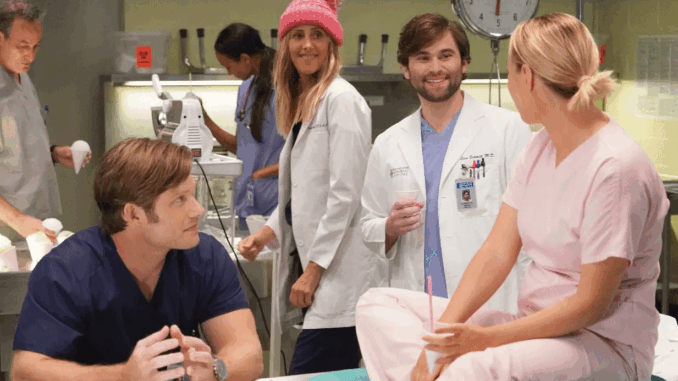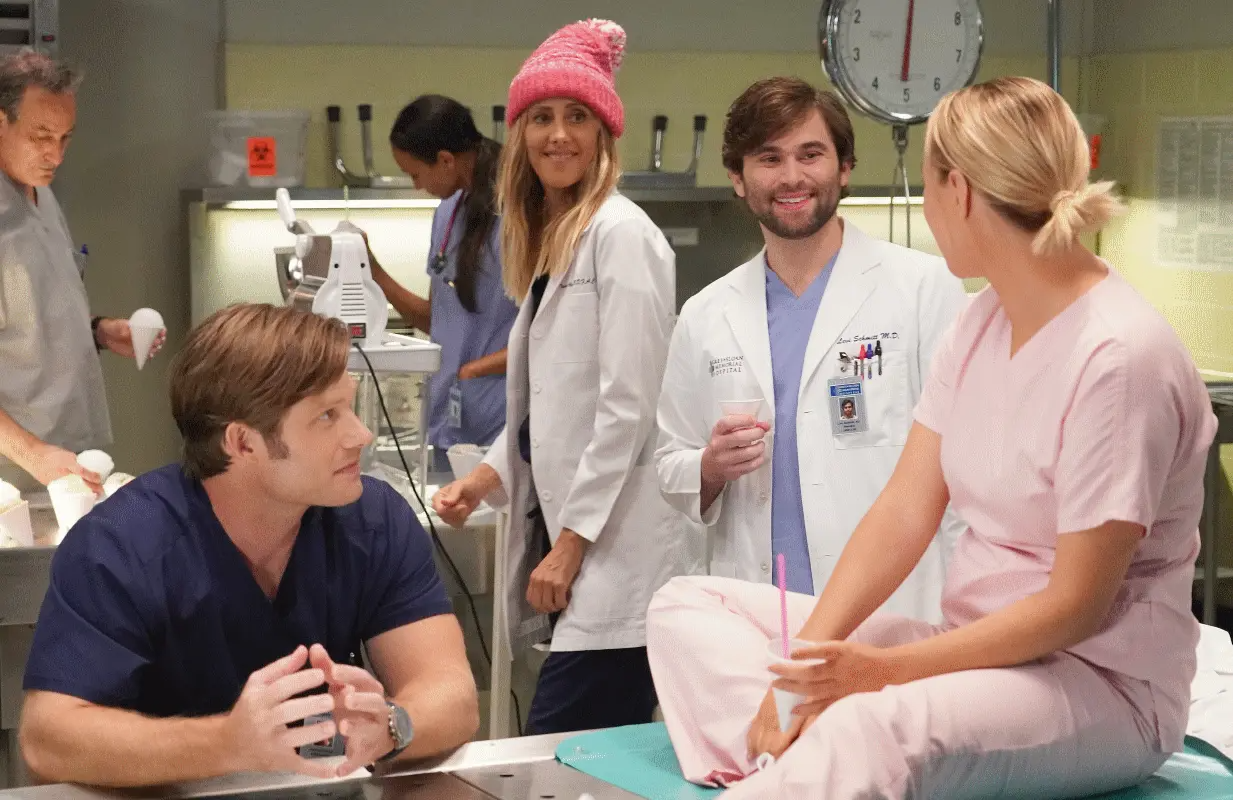
Over its 20-plus seasons, Grey’s Anatomy has made viewers tearful, breathless, angry, and moved. But if we had to pick a milestone where all the elements – emotion, medical ethics, courage, and artistic quality – reached their peak, nothing could surpass the last two episodes of season 6: “Sanctuary” and “Death and All His Friends.”
This is not just a regular “season finale.” It is an epic tragedy, where each character is pushed to their ultimate limit, where life and death are close at hand every second – and also when the true humanity is revealed: who stands firm, who breaks down, who saves lives, and who must leave.
1. Development: When a husband who loses his wife turns his grief into mass death
Everything begins in a surprisingly peaceful way. A workday like any other at Seattle Grace Hospital – now called Seattle Grace Mercy West. But no one knew that a man named Gary Clark, with a gun hidden under his shirt, had entered the building.
A few episodes ago, viewers witnessed Gary appear as a grieving husband when his wife died after an operation. Angry that he felt abandoned by a cold and rule-filled medical system, Gary harbored a grudge and returned – this time, with the goal of killing “the doctors who ruined his life”.
Derek Shepherd, then the hospital director, was on the first list. But when the gunshot rang out, not only Derek but the entire hospital was caught in a storm of blood.
2. No more soundtrack, no more narration – just the sound of heartbeats and deadly silence
One of the elements that made this episode special was the completely changed cinematic language:
There was no familiar background music, which often contributed to guiding emotions.
There is no inner voiceover from Meredith or any other character – which has become the style of the series.
It is all about the trembling footsteps, the cold gunshots, the rapid breathing and the panicked eyes.
That change is not just to refresh the structure. It is an artistic statement: the director wants the viewer to no longer be a guided audience, but to become the person living in that nightmare, feeling the wordless fear from every hallway, every hospital room.
3. Life and death choices: People reveal themselves when there is nothing left to lose
Two episodes that make all the characters face the ultimate limit:
● Cristina Yang – facing the killer while still holding a scalpel
Cristina is forced to operate on Derek right in front of Gary – who can pull the trigger at any time. But she does not tremble. Cristina is so calm that she is cold, still performing the procedure correctly, keeping Derek alive. It was one of the character’s most professional moments, demonstrating that in the midst of chaos, some people still choose to keep the Hippocratic oath.
● Bailey – the doctor who falls for the first time in her life
Bailey, usually strong and steadfast, now trembles like a weak mother when she witnesses her student, Charles Percy, being shot. Unable to save him, Bailey has to lie: “We’ll be okay” – to soothe a departing soul. In that moment, she is no longer a doctor, but a helpless person in the midst of a storm of blood.
● Meredith Grey – silent miscarriage
While still a doctor, still helping victims and colleagues, Meredith has to lose her first child right in the hospital hallway without being able to scream, unable to cry – because others need her. Never has silence been so painful.
● Lexie Grey and April Kepner – witness, survive and grow
Lexie and April – two young doctors who are still immature – understand for the first time what it means to be afraid of losing a loved one right in front of your eyes, what it means to be angry and numb. After this episode, they will never be the “normal” girls in the hospital again.
4. The art of storytelling: Shonda Rhimes’ tragic symphony
Shonda Rhimes does not try to create cheap “drama”. This shooting is not for pure shock. It is a distillation of the entire series philosophy:
Doctors are people too.
The hospital – a place that seems safe – can turn into a battlefield.
Loss is not predicted.
Bravery does not mean not being afraid – but being afraid and still doing the right thing.
In the hands of the screenwriter, the two episodes became a miniature film, not just entertainment television but a challenge to the audience: If you were there, what would you do?
5. Legacy: When two episodes changed Grey’s Anatomy forever
After the shooting, everything changed:
Meredith lost her pregnancy – but became stronger.
Cristina no longer believed in love – and gradually drifted away from Owen.
Bailey changed her view on medical ethics and education.
Jackson Avery – who stood still in the operating room when Gary held a gun to Cristina – grew up and understood what it meant to be responsible for life and death.
The hospital changed its operations, tightened security – but the trust of the staff was never the same.
More importantly, audiences – who seem to be “used” to Grey’s-style tragedy – are still stunned. Many call this “the episode that makes them stop and… breathe.” Some watch it every year – to remind themselves: courage and humanity still exist, even when the whole world is falling apart.
When Grey’s Anatomy is not just a movie, but a wake-up call
“Sanctuary” and “Death and All His Friends” are not just special episodes. They are painful but necessary reminders of how fragile life is, that even the best people sometimes fall, that medical ethics are not just in textbooks, but in every second of deciding to save another person’s life.
And if one day you ask: “Why are millions of people still watching Grey’s Anatomy after more than 20 years?” – watch these two episodes again. Because this is when Grey’s Anatomy hits its peak — not because of spectacular surgery, but because of real pain and real humanity.

